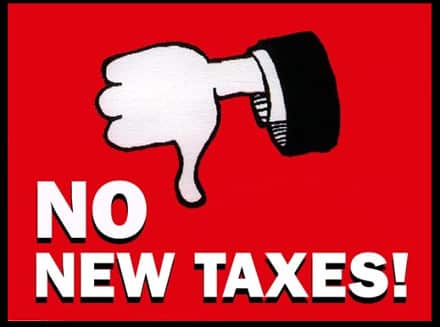
Why have people supported or voted for the adoption of tobacco taxes? For one thing, they hear numbers that sound encouraging, like how every time the cigarette price increases by 10%, the youth demographic decreases its smoking by about 7%.
Another reason seems obvious, too. People have heard about the burden laid on the health care system by smoking-related diseases. Smoking causes serious health consequences, so let the habit pay for itself by giving money to the government to meet the costs of those illnesses. And pay they do. Two-thirds of the cost of a pack of cigarettes is tax. Does anyone really know where the money goes?
Apparently, tobacco tax money pays a lot of bills, not all of them related to tobacco or the illnesses it precipitates. Keith Evans, writing for eHow.com, says the federal share buys health-related programs, including educational ones — and some of those programs deal with tobacco education. These anti-smoking efforts are mainly aimed at the young. Also, the federal piece of the tax pie pays for military health benefits and grants for cancer research.
Another eHow page describes the State Children’s Health Insurance Program or SCHIP, which is administered by the U.S. Department of Health and Human Services. The funding helps uninsured kids whose families don’t qualify for Medicaid. This is indeed health care, though not tobacco-related. But the public might have expected something different, like plenty of tobacco-related health care.
The next level
The system is complicated. The federal government kicks back some of its share to the states, and then the states set their own percentage levels, taxing tobacco a little or a lot, or somewhere in between. The money goes for Medicare and Medicaid, as well as social work programs and state parks — not to mention roads and prisons, or just anything the regular budget doesn’t stretch to.
States also have education programs to help people quit smoking or persuade them to never start. Jai Garg describes how most of each dollar of California’s state cigarette tax is divided:
According to the California Board of Equalization, 10 cents of the revenue goes to the state’s general fund. Two cents goes to the Breast Cancer Research Fund. Fifty cents goes towards programs to help children develop. The other 25 cents is used for various purposes, including environmental protection and tobacco-related education programs.
Evans writes:
Some states also choose to simply squirrel away the money collected from cigarette taxes, allowing the money to collect interest that can then be spent on high-priority budget items. According to the Independence Institute, a Colorado-based government watchdog, a 1999 bill requires Colorado to place cigarette tax money into a trust fund, allocating only 6 percent of the principle balance for spending each year.
In some places, cigarette tax revenues pay the Highway Patrol’s salary. These non-health-related expenditures might be a problem when a citizen has a grudge against either state parks or the Highway Patrol. The point is, some Americans are unhappy about where the money ends up.
Without discussing whether they are right or wrong, it is possible to see how this line of thought leads to an unavoidable consequence. Some people favored the tobacco tax because they were led to believe that the money would be spent differently from how it has been spent. When a soda tax or junk food tax is proposed, the way people vote could be influenced by the perception that the resultant spending might be all over the map.
Your responses and feedback are welcome!
Source: “President Obama Signs Children’s Health Insurance And Federal Tobacco Tax Increase Into Law,” MedicalNewsToday.com, 02/05/09
Source: “How Are Cigarette Taxes Spent by the Government?” eHow.com, undated
Source: “Where Does Tobacco Tax Money Go?” eHow.com, undated
Source: “What Is the Cigarette Tax Used For?” eHow.com, undated
Image by macprohawaii

 FAQs and Media Requests:
FAQs and Media Requests: 











